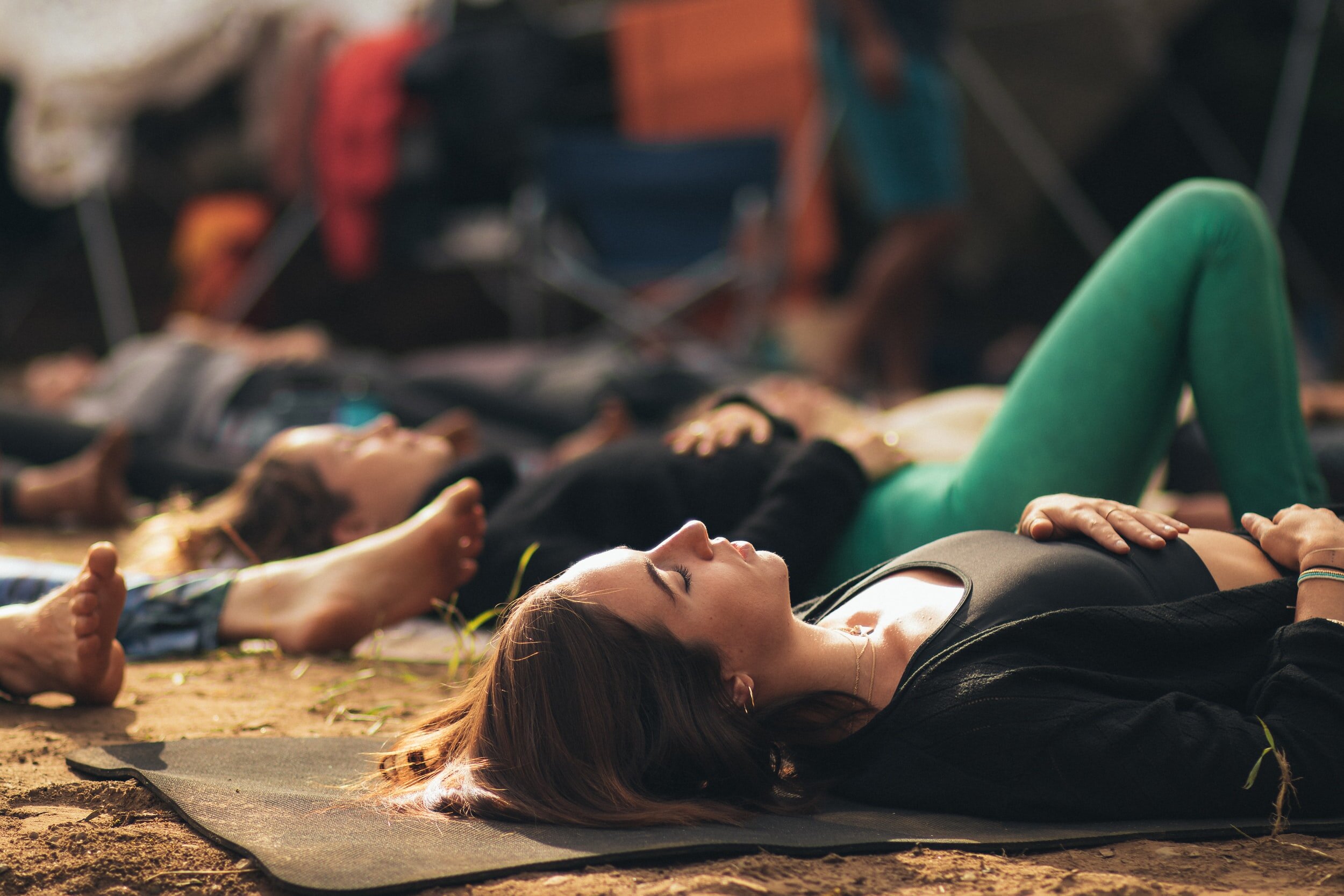The Most Challenging Yoga Pose; it’s Not What You Think.
Resting in Savasana.
Surprisingly, the most challenging yoga pose is not the headstand, handstand, shoulder stand, or some impossible arm balancing pose. The most difficult yoga pose is Savasana- the final relaxation, also known as the corpse pose. How is it that lying on your back, not moving or doing anything, is the most challenging and beneficial pose?
I practiced yoga on and off during my teens and early 20's and didn't visit a yoga studio until the early 1990s. I loved my first class until we came to the end, and the teacher instructed the class to rest in Savasana, and I was like, "what are we doing?" "I don't want to be still!" I was about to roll up my mat and leave when the teacher gave me a look that made me realize how uncool that would have been. I reluctantly tried Savasana, which lasted for 5 minutes, but felt like an hour. I kept my eyes open and fidgeted the entire time. It was excruciating, and I was so happy when we came out of it, and the class was over.
I struggled with Savasana and never understood its point until I completed my Yoga Teachers' Training in 1998. I discovered why it's essential to end a yoga practice with Savasana and its many benefits beyond the mat.
Savasana seems like you are doing nothing, but that is the point. In the stillness, you are relaxing while remaining conscious and alert. Savasana is often referred to as the "Art of Relaxation" because you learn to cultivate conscious relaxation, which will calm your nervous system and greatly benefit you physically and emotionally.
The Nervous System
To appreciate how Savasana positively impacts your mind and body, it's important to have a basic understanding of your nervous system. The human body has one nervous system that is subdivided into a central nervous system (CNS) and a peripheral nervous system (PNS) (see figure below).
Actions on your heart, lungs, pupils, digestive system, and urinary system occur without your conscious awareness and are controlled involuntarily by the autonomic nervous system (ANS).
The ANS is subdivided into sympathetic and parasympathetic nervous systems. The sympathetic branch of the ANS is responsible for the "fright, flight, or fight" response elicited when startled. Being chased by a bear would activate the sympathetic nervous system increasing your heart rate and causing you to hyperventilate. A sympathetic response can also occur during illness or physical trauma, from anxiety, or pretty much any stressful situation. Such a response is characterized by increased heart rate and blood pressure.
On the other hand, the parasympathetic division is responsible for energy-conserving ("rest and digest") activities, including decreased heart rate, blood pressure, and respiration; constriction of the pupils, increased secretions and peristalsis of the digestive tract; and increased urination.
ANS is necessary to regulate the activity of these organs, essentially causing them to speed up or slow down to maintain homeostatic conditions in the body. (1)
"Savasana stimulates the parasympathetic nervous system (your rest and digest response) and calms your sympathetic nervous system (your fight, flight and freeze response)." Noah Mazé, international yoga teacher and co-founder of YOGAMAZÉ
Do you find Savasana challenging?
Our lives are at full speed, and allowing yourself to relax and be still in Savasana may seem like an impossible task. It's completely normal to find Savasana a struggle if you are new to yoga, and it may be something that you would rather skip to get on with your day. Or you may have experience with yoga and still find it hard.
I encourage you to become curious about your Savasana experience. When you first start practicing Savasana, you may lie there feeling bored, impatient and staring at the ceiling. Or, like some students, you might fall into a deep sleep the moment you lie down. The heart of Savasana is to relax consciously and allow long-held stress and tension to release from your body and mind. Learning to be with the discomfort of resting in the present moment with self-compassion and curiosity and observing what is happening to your body and thoughts is the essence of yoga.
The more you find Savasana challenging, the more you need Savasana. It takes consistency, and as you practice, your mind and body will become familiar with the sensations of stillness and slowly start to release any physical or emotional resistance.
How I experience Savasana is always a barometer of how I'm doing emotionally and physically. When I find it hard to be still, and I'm staring at the ceiling, I know that I'm anxious about something, and if I keep nodding off, I know that I'm exhausted and need to pay attention to my sleep. If I skip Savasana in my practice, I miss the opportunity to reset my nervous system and notice that I'll feel a little off for the rest of the day.
Embrace Savasana's benefits and work through any resistance.
Be well & still.
Anita
“In Savasana, the body and mind get a chance to take in and integrate the effects of the practice. It’s also an important practice for the nervous system to recalibrate and reset, which we know is so important in our busy, stressful lives.”
Tiffany Cruikshank, yoga teacher and founder of Yoga Medicine
Resources:



